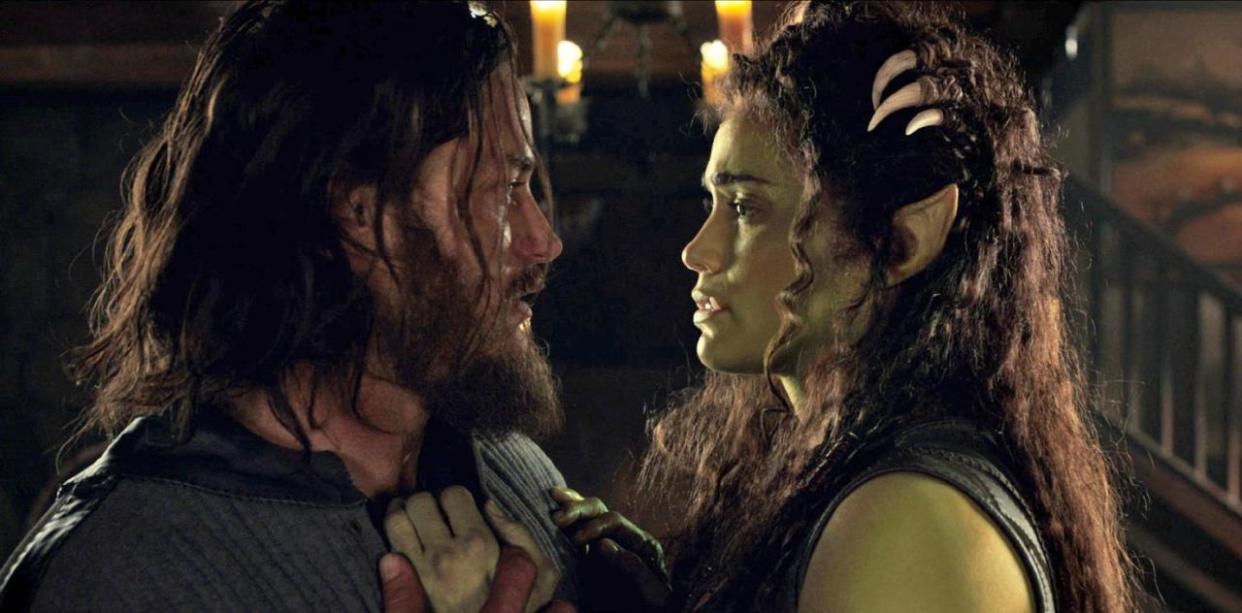'Warcraft' and 10 More U.S. 'Flops' That Flourished Overseas

Travis Fimmel as Commander Anduin Lothar (left) and Paula Patton as Garona in ‘Warcraft,’ a huge international hit that’s fizzled in the U.S. (Photo: Universal Pictures/AP)
Warcraft opened this past weekend in the United States with an underwhelming $24.4 million, good only for second place at the domestic box office behind James Wan’s The Conjuring 2. Considering the based-on-a-videogame project cost a reported $160 million to make and market (it was produced by Legendary Pictures and Blizzard Entertainment), its debut would seem to be one of the year’s most disappointing—except for the fact that, outside the U.S., it’s a monster hit.
Related: ‘Monster Hunt,’ a 3D Movie About a Walking White Radish, Is Breaking Box Office Records in China
In its first five days of release in China alone (where World of Warcraft has a gigantic subscriber base), Duncan Jones’ orcs-vs.-humans saga raked in $156 million (all figures in this post are in U.S. currency), making it the fastest to cross the $100 million threshold there (the previous record-holder: Furious 7). It was China’s biggest two-day box-office premiere ever, is already the country’s eighth-biggest 2016 release, and has already surpassed the $125 million made by The Force Awakens in the country. Add in other international markets, and Warcraft has already earned $261 million outside America.
‘Warcraft’ cast helps you better understand the ‘World of Warcraft’:
Such receipts underline an enormous change in the way we judge the box office performance of blockbuster films. U.S. results are only part of the picture. Given that China is poised to become the world’s largest movie market by next year, Warcraft makes clear the global market’s power.
However, a closer look at recent history suggests that the writing has been on the wall for some time. Over the past decade in particular, numerous Hollywood films the U.S. market perceives as “flops” have drawn substantial global audiences. Here’s a rundown of ten movies called box office duds in the U.S. that, when viewed through an international lens, look like success stories.
Terminator: Genisys (2015)
Arnold Schwarzenegger’s return to the Terminator fold (he sat out 2009’s Christian Bale-led prequel Terminator: Salvation) didn’t interest American audiences, who shelled out only $89.7 million to see him resume time-traveling robo-duties during the film’s summer 2015 run. However, with $350.8 million in international sales, Genisys is one of the starkest examples yet of overseas markets’ importance.
Related: ‘Monster Hunt,’ China’s Biggest Movie Ever, Is Coming to America
Pacific Rim (2014)
Guillermo Del Toro’s monsters-vs.-robots smash-‘em-up nosed across the $101.8 million domestic finish line. It soared everywhere else, however, seizing a cumulative $309.2 million—which is why we’ll soon be seeing a John Boyega-led sequel.
Watch director Guillermo del Toro talk 'Pacific Rim 2’ at Comic-Con 2015:
The Golden Compass (2007)
The Nicole Kidman-led fantasy film was supposed to initiate a big-budget franchise. After earning only $70.1 million in the U.S. (thanks, in part, to controversy over its not-so-subtle critique of Christianity), New Line dropped its plans—despite the fact that, overseas, the film found its way to $302.1 million.
John Carter of Mars (2012)
Andrew Stanton’s fantasy sci-fi epic became the poster-child for big-budget train wrecks thanks to a $73 million domestic take against a $250 million production budget. That reputation seems less fair in light of the film’s impressive $211 million international haul, which helped it break even (along with home video/VOD profits).
The Mummy: Tomb of the Dragon Emperor (2008)
Without original participants Rachel Weisz, Arnold Vosloo, and director Stephen Sommers, the third entry in Universal’s modern Mummy franchise only cleared $102.5 million in the U.S. Still, thanks to cast members Jet Li and Michelle Yeoh, it flourished in other corners of the world, where it grossed an eye-opening $298.6 million (giving it $401 million total, just shy of the original’s $415 million and the first sequel’s $433 million).
Related: Original ‘Star Wars’ Trilogy Screens in China for First Time Ever
Troy (2004)
With $133 million earned in summer 2004, Wolfgang Peterson’s Troy did respectable if underwhelming domestic business. Thanks to Brad Pitt’s superstardom, though, it cleaned up overseas, tallying a gargantuan $364 million.
The Chronicles of Narnia: The Voyage of the Dawn Treader (2010)
Made by Walden Media and 20th Century Fox for far less than its two predecessors (which were co-produced by Walt Disney Pictures), this third entry in the Narnia series was greeted with a shrug by American moviegoers in December 2010. Nonetheless, its ho-hum $104.4 million domestic take was bolstered by $311.3 million from international markets—implying that there’s still an audience for future installments.
Watch the trailer for ‘The Chronicles of Narnia: The Voyage of the Dawn Treader’:
Hansel and Gretel: Witch Hunters (2013)
This action-oriented take on the fairy tale starring Jeremy Renner and Gemma Arterton barely recouped its $50 million budget with $55.7 million at the U.S. box office—and then made an additional, remarkable $170.6 million elsewhere.
Related: China Bans ‘Deadpool’ Release Due to Graphic Violence
A Good Day to Die Hard (2013)
Bruce Willis’ superstar credentials were reconfirmed by his fifth outing as supercop John McClane, which failed to fire up American moviegoers ($67.3 million) and yet—somehow, some way—thrilled international moviegoers ($237.3 million).
Waterworld (1995)
At the time, Kevin Costner’s aquatic riff on The Road Warrior stood as one of Hollywood’s most expensive productions ever ($175 million). When it netted only $88 million at home, it became a notorious dud—albeit somewhat unfairly, as its $175.9 million non-U.S. bounty, when coupled with later home video sales, ultimately made it a moderately profitable venture.
Watch the U.S. trailer for ‘Monster Hunt,’ a huge hit at China’s box office:
